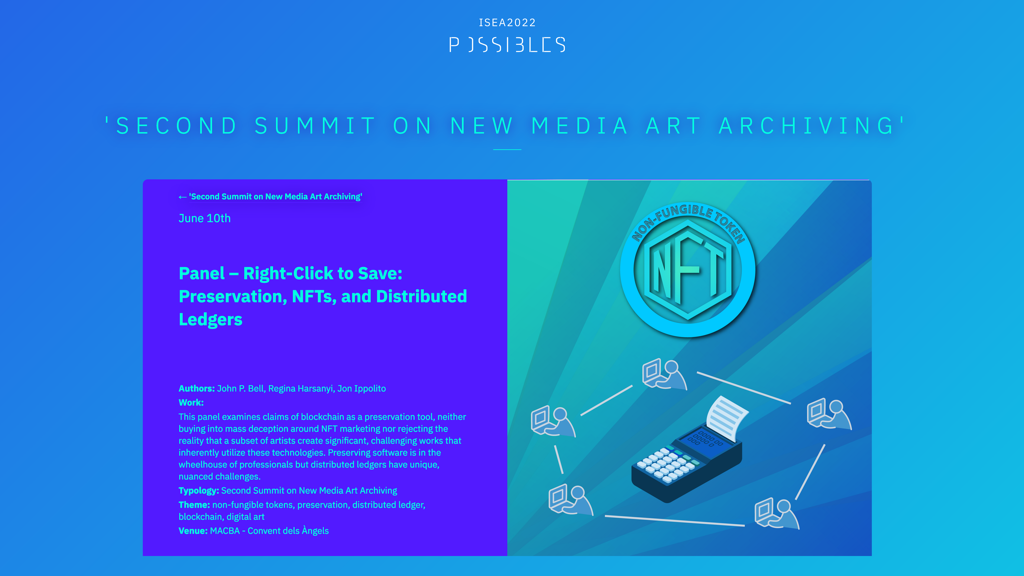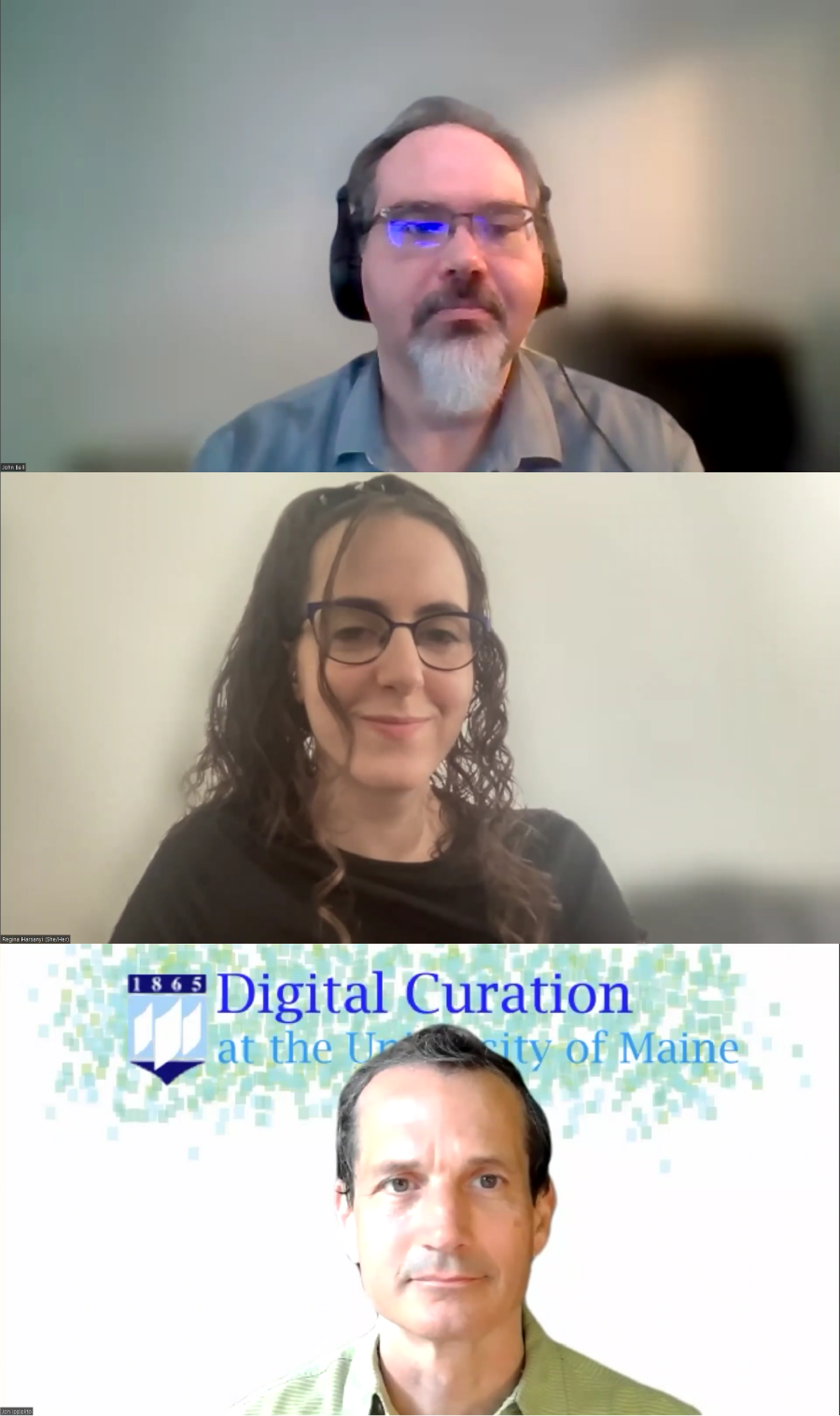
 A claim frequently repeated in the last year by advocates of blockchains and NFTs is that distributed cryptographic ledgers will ensure an accessible and immutable record of born-digital and digitized art for posterity. This panel examines this idea in a nuanced way that neither buys into the hype around NFTs nor rejects the reality that artists are experimenting with these technologies. The analysis draws on cutting-edge experiments such as archival packages prepared for artworks that utilize distributed ledgers, as well as historical precedents such as net art collected by museums. While the field is still in its infancy, the presenters forecast the viability of the most promising proposals for preserving, and being preserved by, the blockchain.
A claim frequently repeated in the last year by advocates of blockchains and NFTs is that distributed cryptographic ledgers will ensure an accessible and immutable record of born-digital and digitized art for posterity. This panel examines this idea in a nuanced way that neither buys into the hype around NFTs nor rejects the reality that artists are experimenting with these technologies. The analysis draws on cutting-edge experiments such as archival packages prepared for artworks that utilize distributed ledgers, as well as historical precedents such as net art collected by museums. While the field is still in its infancy, the presenters forecast the viability of the most promising proposals for preserving, and being preserved by, the blockchain.
John Bell is a software developer and artist at Dartmouth College. His work there includes acting as Director of the Data Experiences and Visualizations Studio, Associate Director of the Media Ecology Project, Manager of Dartmouth Research Computing‘s Digital Humanities Program, and teaching as a Lecturer in Film and Media Studies. In addition to his work at Dartmouth, he is also an Assistant Professor of Digital Curation at the University of Maine and Senior Researcher at the Still Water Lab.
Regina Harsanyi is passionate about improving and promoting best practices for the longevity of variable media, from plastics to distributed ledger technologies. A graduate of New York University’s Institute of Fine Arts, Harsanyi focuses on time-based media art from historical and technical perspectives in private and public sectors. She has led major time-based media conservation projects for multiple institutions, studios, and collectors, including the Museum of the Moving Image, bitforms gallery, and TRANSFER gallery.
Jon Ippolito is Professor of New Media and Director of Digital Curation at the University of Maine.
Watch the entire video or choose an excerpt from the menu on this page.
Or view more teleconferences from the Digital Curation program.